Square Kufic Design
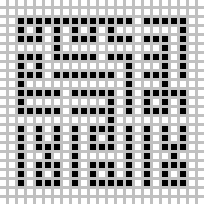
Square kufic design is made on a square grid that always has an uneven number of rows and columns. Where the text is contained in mostly the uneven rows and columns, the space contained mostly in the even. The text fills the designated space with no empty space between, sometimes distorting the letters making interpretation difficult. Any four coordinates arranged in a square will never be all text or all space. In the purest form of square kufic design there is no representation of diacritical marks or space dots (dots that fill space not occupied by text).
One of the most common square kufic design principles is to arrange the text in a square or rectangle. Most of these texts are orientated in a spiral from one corner around the edge and inwards to the middle of the square, the end of the text thus being at the center, as in the illustration below. The illustration is from the anonymous mausoleum of CE 1361 at the Shah-i Zindah Necropolis, Samarqand, and represents the complete Surah 112, al-Ikhlas.
بسم الله الرحمن الرحيم
قل هو الله أحد
اللَه الصَمد
لمْ يلد ولم يولد
و لم يكن له كفوا أحد
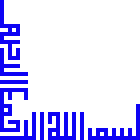

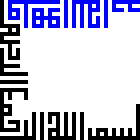

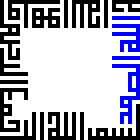

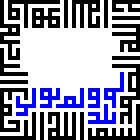

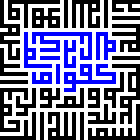

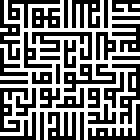
Most often the spiral is made clockwise but there are examples of the text being arranged anticlockwise or even zigzagging across the design surface.
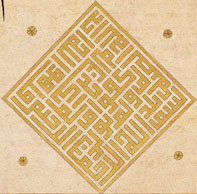
As the rules of square kufic design are strict, they are of course often broken. The above text was also interpreted by the Ottoman calligrapher Ahmed Karahisari, where he indicated the two nun (ن) letters with diacritical dots. The illustration above is from a frontispiece from a collection of religious texts transcribed by Karahisari ca. CE 1540-1550.
Another common feature is space dots that are inserted where the design is difficult or to make the rendering more easily intelligible.

When the design space is not rectangular, or to give a different artistic effect, square kufic can be distorted creating a variant of the script, angular square kufic.
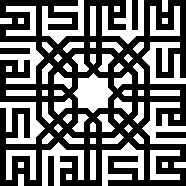
One common way to embellish square kufic squares is to design repeated phrases or names around the edge of a square and then drawing in parts of the letters towards the middle to form one or more sixteen-sided stars or other embellishments at the center.
An effective way to design square kufic is to contain the script within another square kufic word or words. The example here is from the Nimavard Madrasa, Isfahan, Iran and contains the complete Surah 1, al-Fatihah, in the shape of Mohammad.
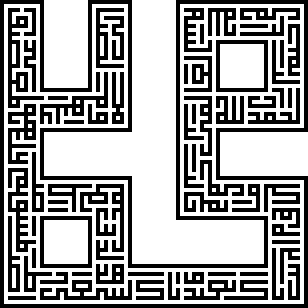
بِسْمِ اللَّهِ الرَّحْمَنِ الرَّحِيمِ
الْحَمْدُ للّهِ رَبِّ الْعَالَمِينَ
الرَّحْمنِ الرَّحِيمِ
مَالِكِ يَوْمِ الدِّينِ
إِيَّاكَ نَعْبُدُ و إِيَّاكَ نَسْتَعِينُ
اهدِنَا الصِّرَاطَ المُستَقِيمَ
صِرَاطَ الَّذِينَ أَنعَمتَ عَلَيهِمْ غَيرِ المَغضُوبِ
عَلَيهِمْ وَ لاَ الضَّالِّينَ
 Square Kufic Design
Square Kufic Design